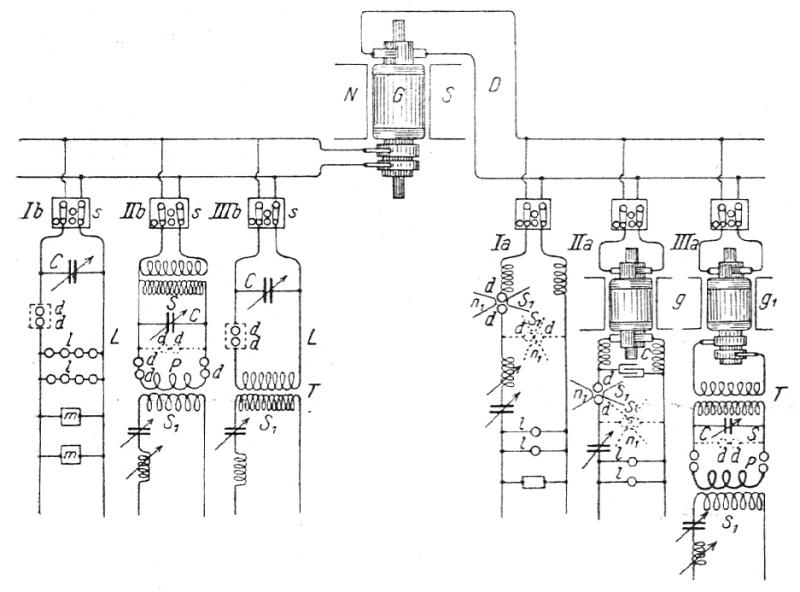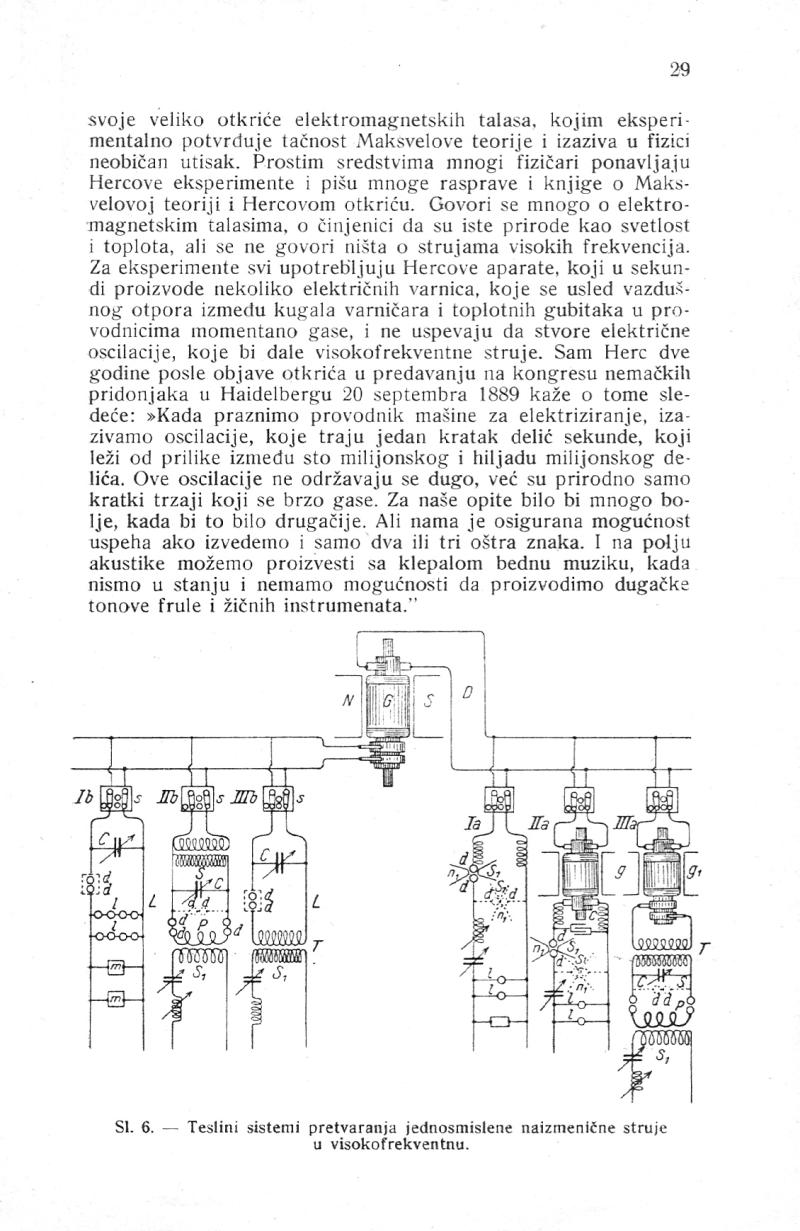
Nikola Tesla Books
his great discovery of electromagnetic waves, through which he experimentally confirms the accuracy of Maxwellâs theory and creates an unusual impression in physics. Many physicists replicate Hertzâs experiments using simple means and write numerous discussions and books about Maxwellâs theory and Hertzâs discovery. Much is said about electromagnetic waves, about the fact that they are of the same nature as light and heat, but nothing is said about high-frequency currents. For experiments, everyone uses Hertzâs apparatus, which produces several electrical sparks in a second. Due to air resistance between the spark spheres and thermal losses in the conductors, these sparks are extinguished instantly and fail to create electrical oscillations that would generate high-frequency currents. Hertz himself, two years after announcing the discovery in a lecture at the congress of German contributors in Heidelberg on September 20, 1889, says the following: âWhen we discharge the conductor of the electrifying machine, we induce oscillations that last a short fraction of a second, roughly between one hundred millionth and one thousand millionth of a second. These oscillations do not last long, they are naturally just short jerks that quickly extinguish. For our experiments, it would be much better if it were different. But we are assured of success if only two or three sharp signals are executed. In the field of acoustics, we can produce poor music with a clapper when we are unable and do not have the ability to produce long tones of flutes and string instruments.â

